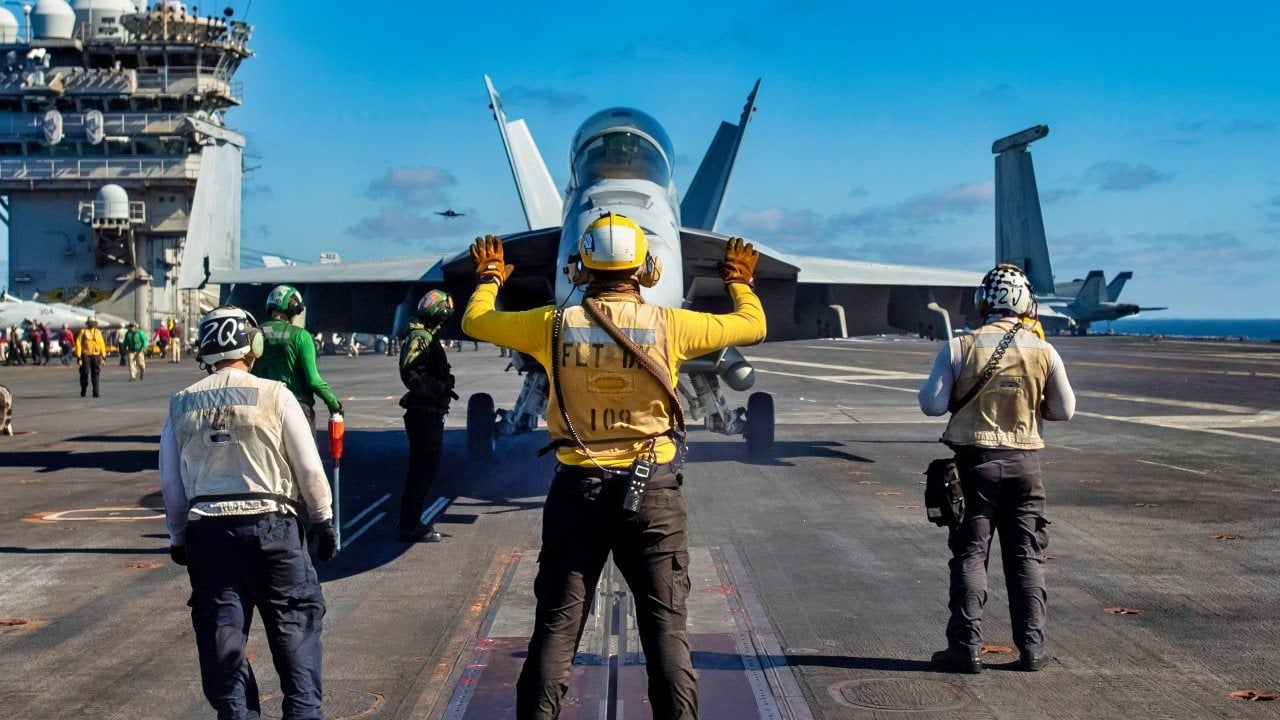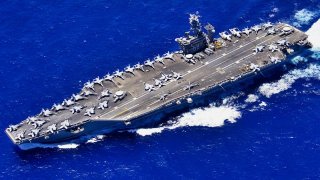Nimitz-Class: The Aircraft Carrier China Could Sink in a War
The U.S. Navy's reliance on Nimitz-class aircraft carriers, despite evolving threats like China's anti-access/area-denial (A2/AD) strategy, highlights a growing disconnect between prestige and practicality.
Summary and What You Need to Know - 4 Top Points: The U.S. Navy's reliance on Nimitz-class aircraft carriers, despite evolving threats like China's anti-access/area-denial (A2/AD) strategy, highlights a growing disconnect between prestige and practicality.
-Aircraft carriers, once unmatched symbols of power, face increasing vulnerabilities to Chinese anti-ship missiles and hypersonic weapons.
-China's lessons from the 1990s Taiwan Strait Crisis led to advanced strategies aimed at neutralizing U.S. carriers.
-While Nimitz-class carriers boast impressive capabilities, including countermeasures against missiles and submarines, their high cost and susceptibility raise concerns about their future effectiveness.
Some argue the U.S. should shift focus toward submarines, as carriers may be a strategic liability in modern warfare.
When the aircraft carrier was first adopted by the United States Navy, few would have believed that it’d have been anything more than a curious sideshow; a waste of resources that diverted investment away from the truly important asset in the Navy’s fleet: the battleship. But after the Second World War, when aircraft carriers proved to be far more valuable to the Navy than were the battleships, it was impossible to divorce American war planners in the postwar era, and during the Cold War, from the aircraft carrier. Indeed, back then, the Navy’s flat tops were true gamechangers.
Today, however, things have changed.
America’s great state rivals, notably China, have studied the American way of war for years. It was during the Taiwan Strait Crisis in the mid-1990s that proved to Beijing how vulnerable they were to just two US aircraft carriers. At that time, the bulk of China’s military had been rallied against neighboring Taiwan.
Upset that Taiwan, which China views as a breakaway province, might have elected a pro-independence president, Beijing embarked upon an aggressive intimidation campaign against Taiwan. Almost daily fusillades of missiles were launched from China and shot over Taiwan.
The Clinton Administration, upset over China’s brinkmanship, deployed two aircraft carriers (one of them being none other than the U.S.S. Nimitz) to sail through the Taiwan Strait as a show of force against China, and effectively ended the standoff in Taiwan’s favor. But China’s war planners vowed to never be cowed in such a humiliating way.
Thus, China crafted their anti-access/area-denial (A2/AD) strategy which is predicated on preventing the United States military from projecting power near to Chinese areas of interest (such as the Taiwan Strait or the South China Sea).
Despite China’s confidence that their anti-ship missiles and hypersonic weapons can keep US aircraft carriers away from their forces—or that they could sink US carriers, if need be—the US Navy continues its support for the expensive aircraft carrier program. Specifically, the Navy continues relying upon the Nimitz-class aircraft carriers to serve as the iron fist of any US military response to China.
The Nimitz-Class is Still the US Navy’s Benchmark
Until 2017, when the U.S.S. Gerald R. Ford, of the eponymously named Ford-class aircraft carriers, was commissioned as a ship of the line in the United States Navy, the Nimitz-class aircraft was the largest type of ship ever built. It is more than just a floating airbase. The Nimitz-class, like its even larger and more sophisticated successor, the Ford-class, is not just an offensive weapons platform.
The carrier is the ultimate symbol of prestige.
For the last 70 years, US aircraft carriers have traversed the high seas, displacing the ocean surface and reminding foreign nations everywhere of the power—and reach—of the United States military. In fact, US carriers have probably had more impact as a tool of soft power in the last several decades than as a weapon of American hard power (although its offensive capabilities should never be discounted).
Capable of traveling at 30 knots (about 34.5 miles per hour, which is very fast considering the size of the warship and the load it carries). The Nimitz-class carries around 5,000 crew and sports an airwing of around 82 aircraft (both airplanes and helicopters). The newer Nimitz-class carriers are equipped with a complement of NATO Sea Sparrow surface-to-air missiles. The carriers are further augmented by a close-in-weapon system (CIWS) and an assortment of other defenses against the very kinds of antiship missiles that rival nations like China plan to launch against these mighty warships.
The Nimitz-class has the ability to launch anti-torpedo countermeasures as well, to better protect the warship from submarines. This is a much-needed advancement, since in 2006, a diesel-powered (and therefore ultra-quiet) Chinese submarine surfaced beside a Nimitz-class carrier that was on patrol—surprising everyone onboard and stunning American defense planners.
China Exploits Vulnerabilities on Aircraft Carriers
Some carefully placed torpedoes, from a sub that was as close to the carrier as the Chinese submarine was, might have rendered the countermeasures useless. But the fact remains that the United States government, in its infinite wisdom, has decided that these monstrosities are worth the investment.
Multiple sources within the Navy, some active duty and some retired, insist that America’s ubiquitous aircraft carriers can handle themselves—and easily handle whatever A2/AD capabilities China has deployed against the Navy in the Indo-Pacific.

A Decadent Power
But there is a capabilities mismatch.
Sadly, the United States has become a declining nation that still clings to its past greatness while being led by a decadent, out-of-touch elite. America’s fixation on the prestige of the aircraft carrier rather than the most effective weapon to use against China—the submarine—is likely to going to do for our Navy that which the German fixation on an “unsinkable battleship” (the Bismarck) did for the Kriegsmarine: lead the country to a serious defeat.
Let's hope the US war planners are better at their jobs than the German planners were.
Author Experience and Expertise: Brandon J. Weichert
Brandon J. Weichert, a National Interest national security analyst, is a former Congressional staffer and geopolitical analyst who is a contributor at The Washington Times, the Asia Times, and The-Pipeline. He is the author of Winning Space: How America Remains a Superpower, Biohacked: China’s Race to Control Life, and The Shadow War: Iran’s Quest for Supremacy. His next book, A Disaster of Our Own Making: How the West Lost Ukraine, is due October 22 from Encounter Books. Weichert can be followed via Twitter @WeTheBrandon.
All images are Creative Commons or Shutterstock.
From the Vault
Russia Freaked Out: Why the U.S. Navy 'Unretired' the Iowa-Class Battleships
Battleship vs. Battlecruiser: Iowa-Class vs. Russia's Kirov-Class (Who Wins?)


